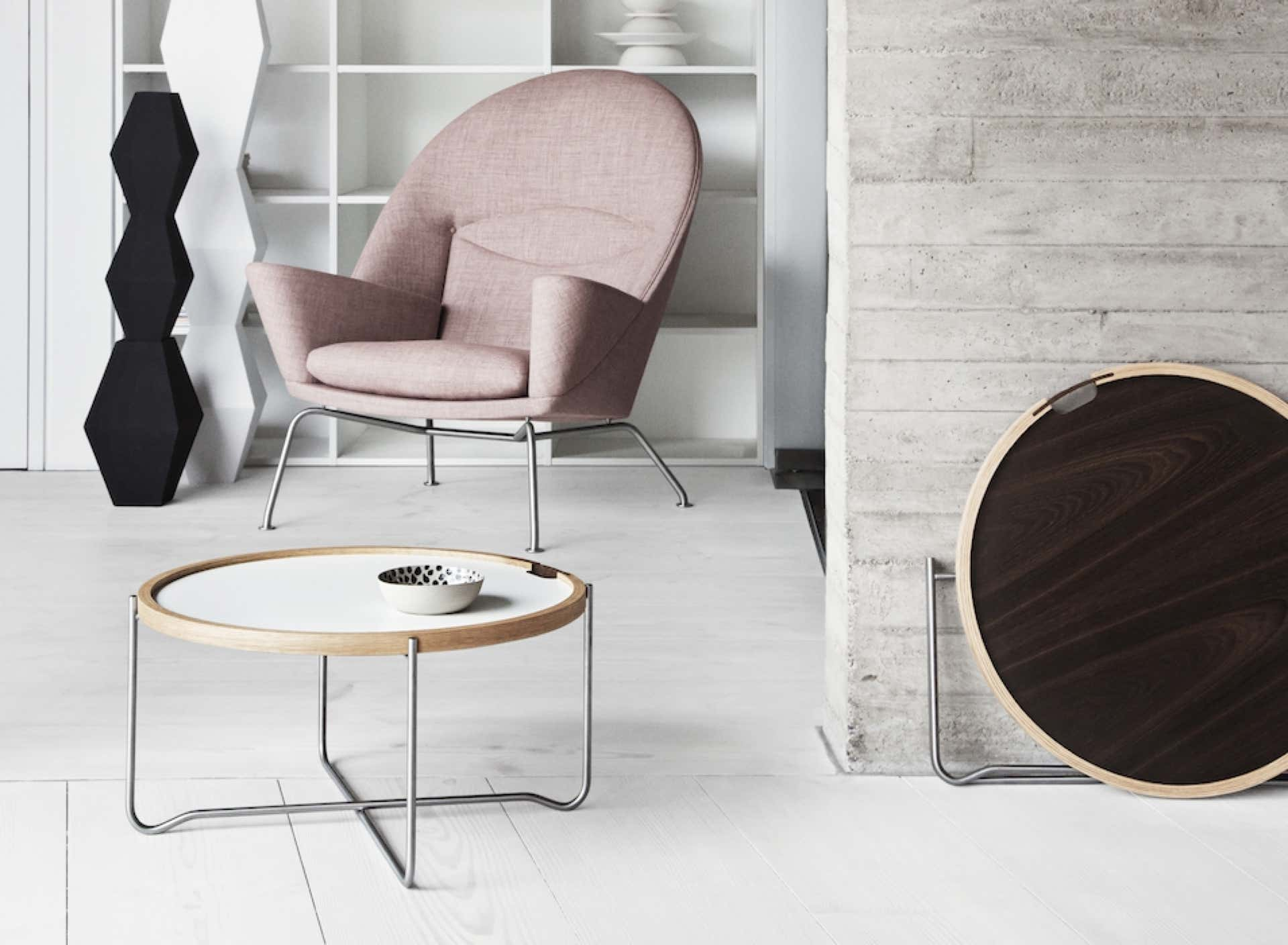Home > Carl Hansen > Coffee tables > CH417 Tray Table
Home > Carl Hansen > Coffee tables > CH417 Tray Table
15% off with DESIGN15

Designed in 1970, the CH417 reversible top table by Hans J. Wegner is simply designed with a foldable base and a reversible round top, which makes it easy to store and allows you to change your interior in the blink of an eye. The very light top has a solid oak edge with a walnut handle and is available in a version with black laminate on one side, white on the other, or with oak / walnut veneer on each side.
Dimensions Ø62 x H33 cm
Base stainless steel
Reversible tray black/white laminate or oak/walnut veneer
Edge oak
Handle walnut
CH417 Tray Table
from
Black/White laminate
Oak/Walnut veneer
Hans J. Wegner

Hans J. Wegner was born in 1914 in Tønder, Denmark, the son of a shoemaker. At the age of 17, he finished his apprenticeship as a cabinetmaker with H. F. Stahlberg, in whose workshops Wegner’s first design experiments took form. He moved to Copenhagen as a 20 year-old, and attended the School of Arts and Crafts from 1936 – 1938 before he began working as an architect.
As a young architect, Wegner joined Arne Jacobsen and Erik Møller in Århus, working on furniture design for the new Århus city hall in 1940. It was during the same year that Wegner began collaborating with master cabinetmaker, Johannes Hansen, who was a driving force in bringing new furniture design to the Danish public.
The Copenhagen Museum of Art and Industry acquired its first Wegner chair in 1942.
Wegner started his own design office in 1943. It was in 1944 that he designed the first “Chinese chair” in a series of new chairs that were inspired by portraits of Danish merchants sitting in Ming chairs. One of these chairs, the “Wishbone Chair”, designed in 1949 and produced by Carl Hansen & Son in Odense since 1950, became the most successful of all Wegner chairs.
Among Danish furniture designers, Hans J. Wegner is considered one of the most creative and productive. He has received practically every major recognition given to designers, including the Lunning prize, the grand prix of the Milan Triennale, Sweden’s Prince Eugen medal and the Danish Eckersberg medal. Wegner is an honorary Royal designer for industry of the Royal Society of Arts in London. Almost all of the world’s major design museums – from The Museum of Modern Art in New York to Die Neue Sammlung in Munich – include his furniture in their collections.
Hans J. Wegner died in Denmark in January, 2007.
Hans J. Wegner’s contribution to Danish Modern:
- First a cabinetmaker, then a designer: integrates exacting joinery techniques and exquisite form.
- A deep respect for wood and its characteristics – and an abiding curiosity about other natural materials
- Brings an organic, natural softness to formalistic minimalism
- Generally regarded as ”the master of the chair”, with more than 400 chair designs to his name